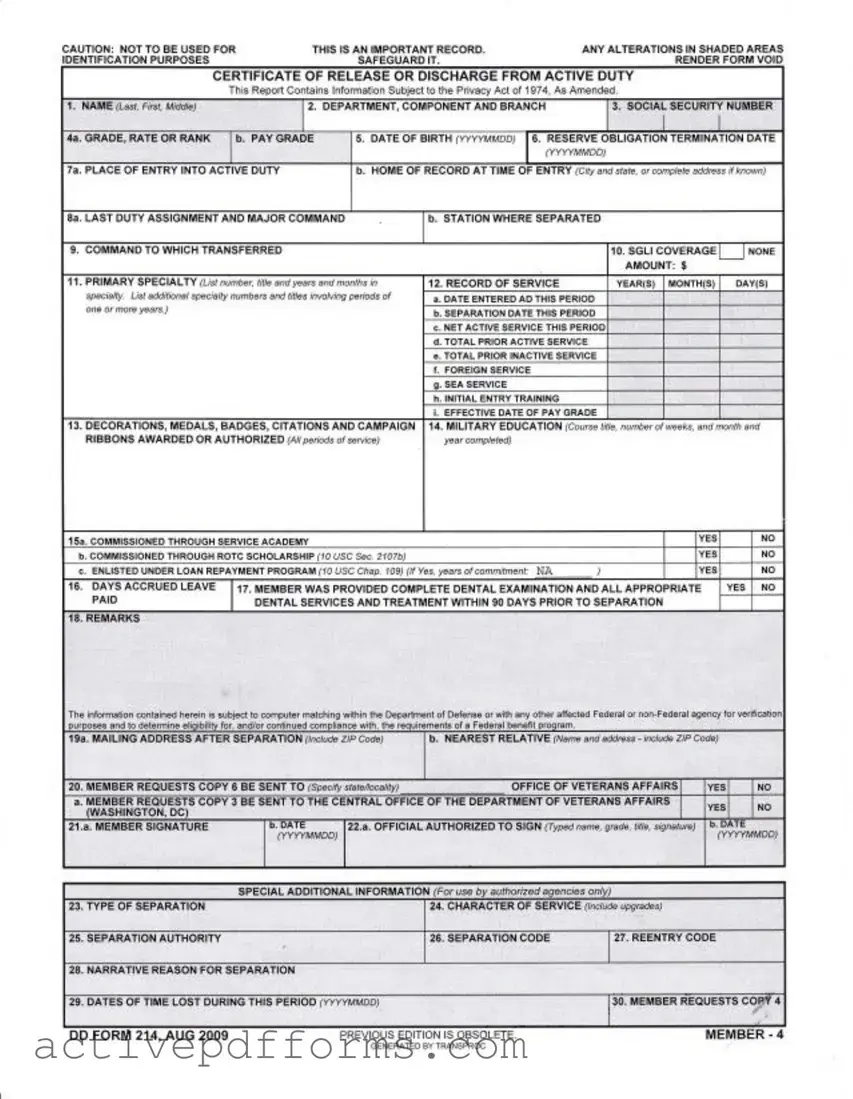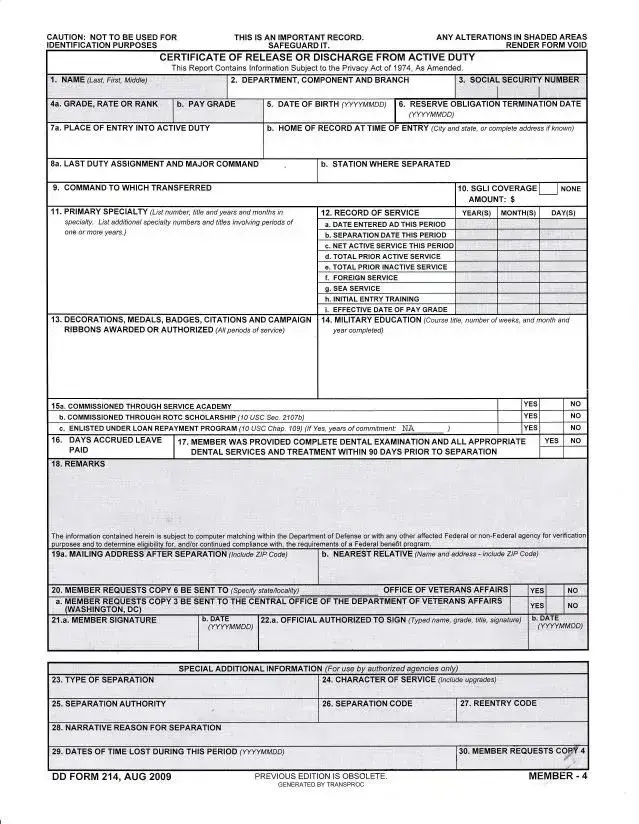The DD 214 form, formally known as the Certificate of Release or Discharge from Active Duty, serves as a crucial document for United States military service members transitioning back to civilian life. This document, protected under the Privacy Act of 1974, encompasses an individual's complete active duty history and service. It details the department, component, and branch of service, social security number, rank, pay grade, dates of service, and reserve obligation termination date, ensuring a comprehensive record. Essential for verifying military service, the DD 214 form aids veterans in accessing benefits, such as education and loan programs, healthcare, and employment opportunities. It lists vital information including the last duty assignment, home of record at entry, military specialty codes, decorations, medals, badges, citations, and campaign ribbons awarded or authorized. Moreover, it outlines any service-related education, commissioned details through service academies or ROTC, enlistment under loan repayment programs, accrued leave, and dental examination status prior to separation. Upon discharge, service members are advised on the form's handling, emphasizing its importance and instructing on safeguarding against unauthorized alterations. As veterans reintegrate into civilian life, this document becomes indispensable for facilitating a smooth transition, underscoring its significance within the broader framework of military service and post-service benefits.

